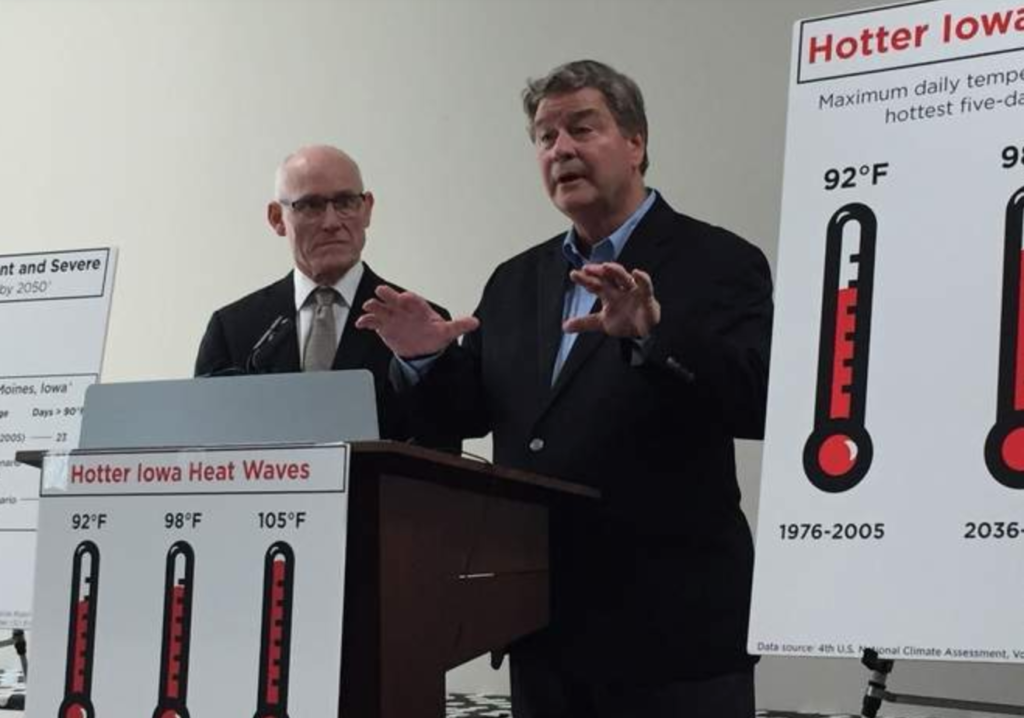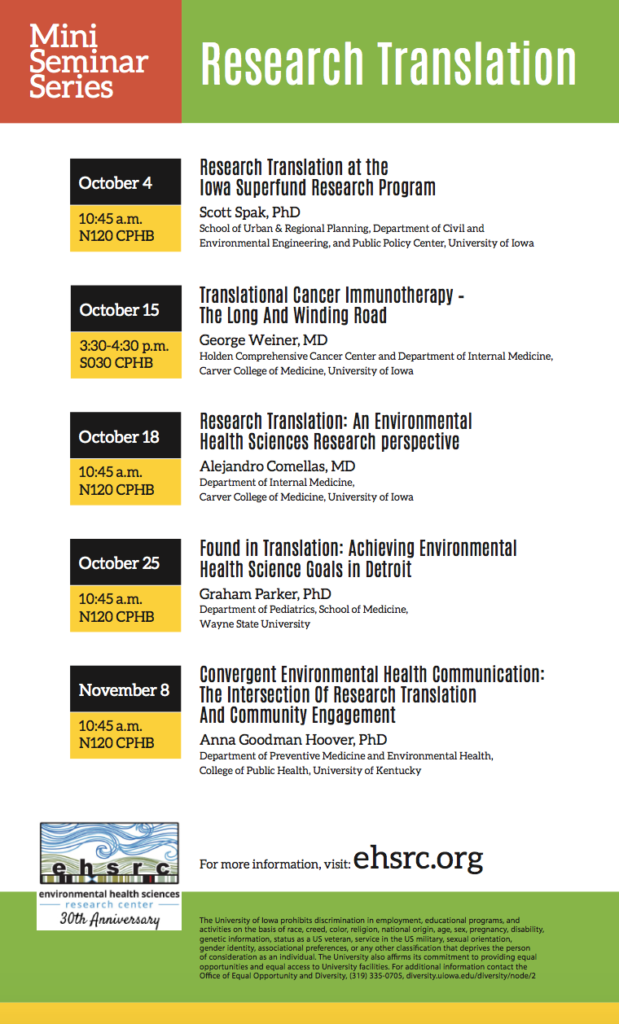The EHSRC will still be hosting weekly seminars on Fridays via zoom. Check out our seminar page to see the most up to date info!
EHSRC Member publishes study about potential link between cardiovascular death and pesticides
Article by Tom Snee, University of Iowa published here
A new study from the University of Iowa suggests that people who have higher levels of a chemical in their body that indicates exposure to commonly used insecticides die of cardiovascular disease at a significantly higher rate.
Findings from the study, published in the journal JAMA Internal Medicine, suggest those who have high levels of exposure to pyrethroid insecticides are three times more likely to die of cardiovascular disease than people with low or no exposure.
Wei Bao, assistant professor of epidemiology in the University of Iowa College of Public Health and the study’s corresponding author, says the findings come from an analysis of a nationally representative sample of American adults, not just those who work in agriculture. That means the findings have public health relevance to the general population.
He also cautions that as an observational study, the research does not determine if the people in the sample died as a direct result of their exposure to pyrethroids. He says that the results indicate a high likelihood of a link, but more research is needed to replicate the findings and determine the biological mechanisms.
Pyrethroids are among the list of commonly used insecticides with the largest market share and they constitute the majority of commercial household insecticides. They are found in numerous commercial insecticide brands and are used widely in agricultural, public, and residential settings for pest control. Metabolites of pyrethroids, such as 3-phenoxybenzoic acid, can be measured in the urine of people who are exposed to pyrethroids.
Bao and his team of researchers analyzed data on 3-phenoxybenzoic acid levels in urine samples collected from 2,116 adults aged 20 and over who participated in the United States National Health and Nutrition Examination Survey between 1999 and 2002. They cross-referenced mortality records to determine how many of those adults in their data sample had died by 2015 and of what cause.
They found that during an average 14 years of observation, those people who had the highest levels of 3-phenoxybenzoic acid in their urine samples were 56% more likely to have died of any cause by 2015 than people with the lowest levels of exposure. Cardiovascular disease was by far the leading cause of death, with a three times greater likelihood.
While Bao’s study did not determine how the subjects became exposed to pyrethroids, he says previous studies show that most exposure to pyrethroids is through food, as people who eat fruits and vegetables that have been sprayed with them ingest the chemical. Residential use of pyrethroids in gardens and homes for pest-control is also a significant source of exposure. Pyrethroids are also present in household dust in homes that apply these pesticides.
Bao notes that the market share of pyrethroid insecticides has increased since the 1999–2002 study period, which makes it likely the rate of cardiovascular disease-related deaths related to its exposure has increased, as well. However, Bao says, further investigation is needed to assess whether this hypothesis holds.
The paper, “Association Between Exposure to Pyrethroid Insecticides and Risk of All-Cause and Cause-Specific Mortality in the General US Adult Population,” was co-authored by Buyun Liu and Hans-Joachim Lehmler in the UI College of Public Health and Derek Simonsen, a UI graduate student in human toxicology. It was published in the Dec. 30, 2019, issue of JAMA Internal Medicine.
New Videos!
View some new content by the EHSRC!
This video focuses on how to read a Consumer Confidence Report:
We also have 5 videos of the Research Translation Mini Series, they can be viewed here.
2019 Iowa Climate Statement Released
Members of the EHSRC, along with partners from around the state, have released the 2019 Iowa Climate Change Statement, focusing on extreme heat and heatwaves.
View the statement document here
View all of the Iowa Climate Change Statements from previous years here

Press Coverage of the Statement
Cedar Rapids Gazette- Iowa scientists, educators warn time running out to combat climate change
Des Moines Register, written by EHSRC Member Dr. Jerry Schnoor –
Upcoming events of EHSRC
We are excited to announce the dates for some of our regular EHSRC programs!
Human Toxicology and EHSRC Research Seminars:
Fridays at 10:45 am View info here
Research Translation Mini Seminar Series view poster here
Specific Aims Review Meetings:
Specific Aims review meetings are available upon request.
Science Cafes:
Fall 2019 dates are:
September 12- 5 pm in Mt. Vernon
September 17- 7 pm in Fairfield
October 17- 5 pm in Mt. Vernon
October 22- 7 pm in Fairfield
November 14- 5 pm in Mt. Vernon
November 19- 7 pm in Fairfield
